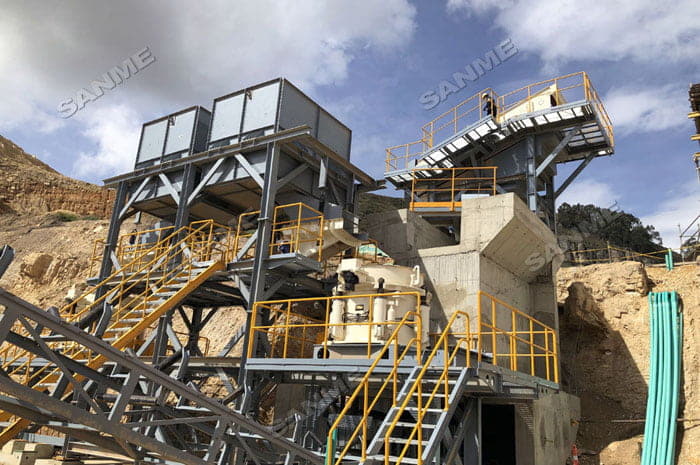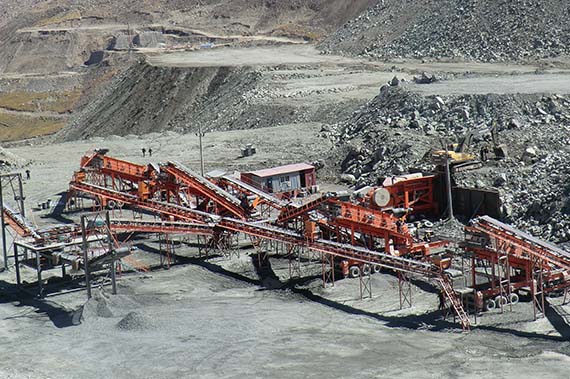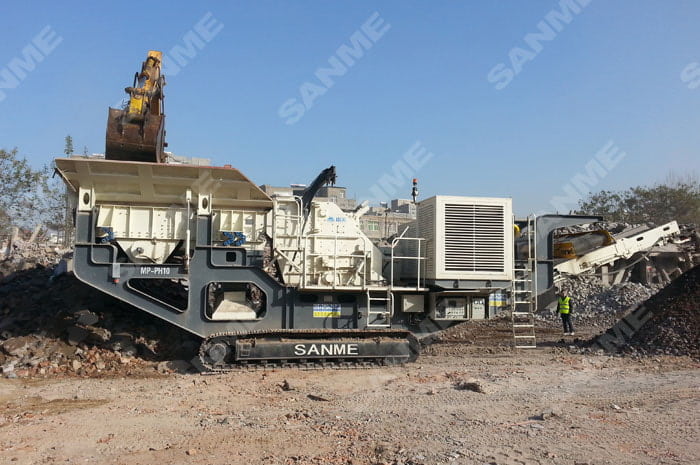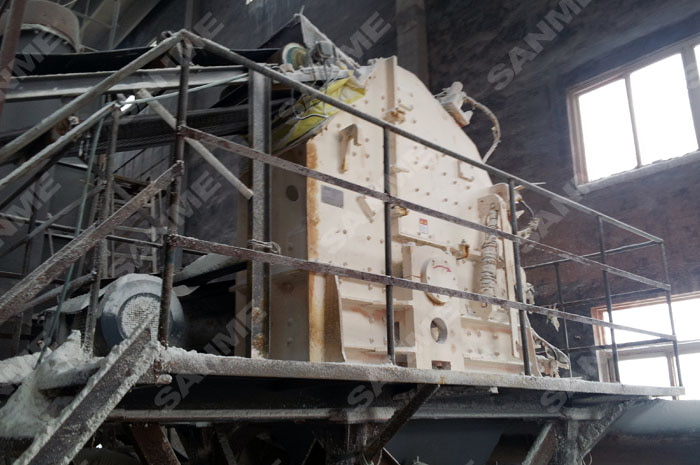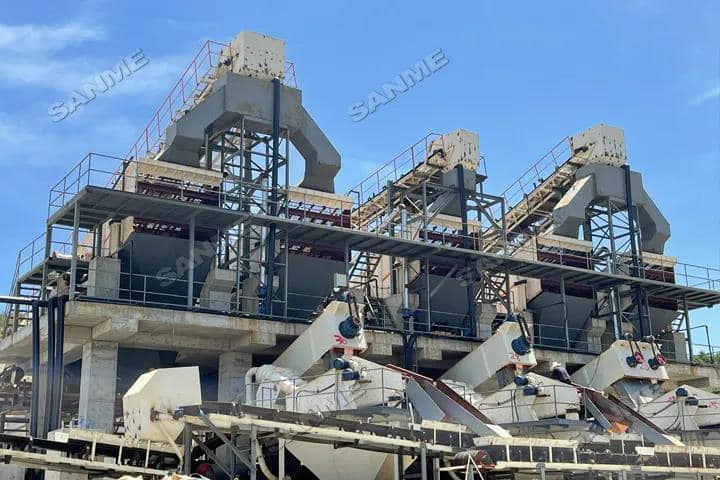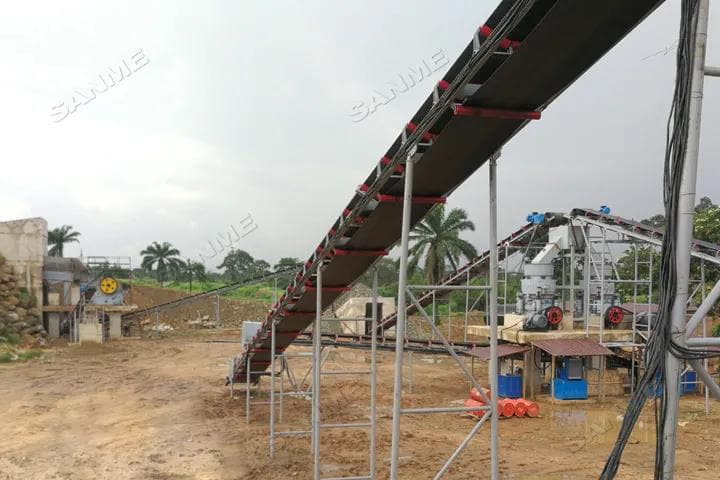BASALT PROCESSING
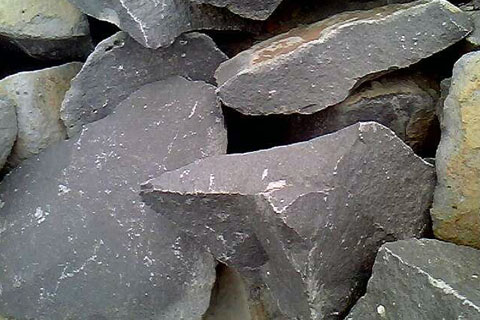
DESIGN OUTPUT
According to customer needs
MATERIAL
Basalt
APPLICATION
Mining, metallurgy, construction, highway, railroad, and water conservancy, and etc.
EQUIPMENTS
Jaw crusher, hydraulic cone crusher, sand maker, vibrating feeder, vibrating screen, and etc.
INTRODUCTION OF BASALT
Basalt is the good source of cast stone. The Moh's hardness of basalt is within 5-7 and the content of SiO2 reaches 45%-52%. Cast stone can be got by melting, crystallizing, annealing the basalt. It is harder and more wearable than alloy, more erosion-resistant than lead and rubber. Besides, there is an advanced steel casting technology where basalt functions as the lubrication agent to extend the life expectancy of casting film. Meanwhile, basalt can be made into fiberglass which owns higher alkali and high temperature resistance. Of all kinds of basalt, the porous basalt, also known as pumice stone, is rigid and can be added in concrete to lose the weight of concrete and insulate the noises and heat. It is the good choice for construction of high buildings.
BASIC PROCESS OF BASALT CRUSHING PRODUCTION PLANT
The Basalt crushing production line is divided into three stages: coarse crushing, medium fine crushing and screening.
The first stage: coarse crushing
The Basalt stone blasted from the mountain is fed uniformly by the vibrating feeder through the silo and transported to the jaw crusher for coarse crushing.
The second stage: medium and fine crushing
The coarsely crushed materials are screened by vibrating screen and then conveyed by belt conveyor to cone crusher for medium and fine crushing.
The third stage: screening
The medium and finely crushed stones are conveyed to the vibrating screen through a belt conveyor to separate stones of different specifications. The stones that meet the requirements of the customer's particle size are conveyed to the finished product pile through the belt conveyor. The impact crusher crushes again, forming a closed circuit cycle.
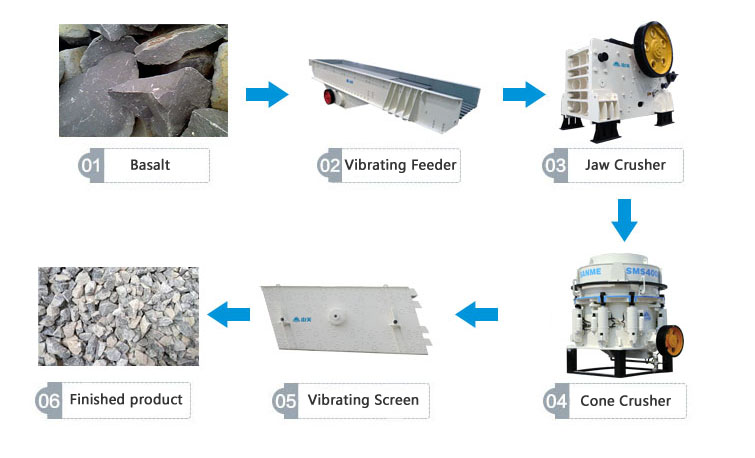
BASIC PROCESS OF BASALT SAND MAKING PLANT
The basalt sand making process is divided into four stages: coarse crushing, medium fine crushing, sand making and screening.
The first stage: coarse crushing
The Basalt stone blasted from the mountain is fed uniformly by the vibrating feeder through the silo and transported to the jaw crusher for coarse crushing.
The second stage: medium broken
The coarsely crushed materials are screened by vibrating screen and then conveyed by belt conveyor to cone crusher for medium crushing. The crushed stones are conveyed to the vibrating screen through a belt conveyor to sieve out different specifications of stones. The stones that meet the requirements of the customer's particle size are conveyed to the finished product pile through the belt conveyor. The cone crusher crushes again, forming a closed circuit cycle.
The third stage: sand making
The crushed material is larger than the size of the two-layer screen, and the stone is conveyed to the sand maker machine through the belt conveyor for fine crushing and shaping.
The fourth stage: screening
The finely crushed and reshaped materials are screened by circular vibrating screen for coarse sand, medium sand and fine sand.
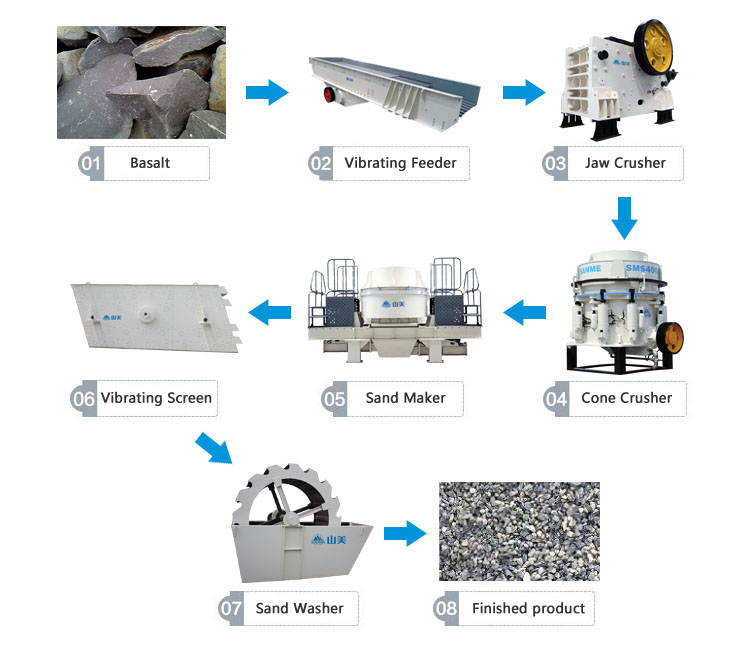
Note: For the sand powder with strict requirements, a sand washing machine can be added behind the fine sand. The waste water discharged from the sand washing machine can be recovered by the fine sand recycling device. On the one hand, it can reduce environmental pollution, and on the other hand, it can increase sand production.
Technical description
1. This process is designed according to the parameters provided by the customer. This flow chart is for reference only.
2. The actual construction should be adjusted according to the terrain.
3. The mud content of the material cannot exceed 10%, and the mud content will have an important impact on the output, equipment and process.
4. SANME can provide technological process plans and technical support according to the actual requirements of customers, and can also design non-standard supporting components according to the actual installation conditions of customers.


